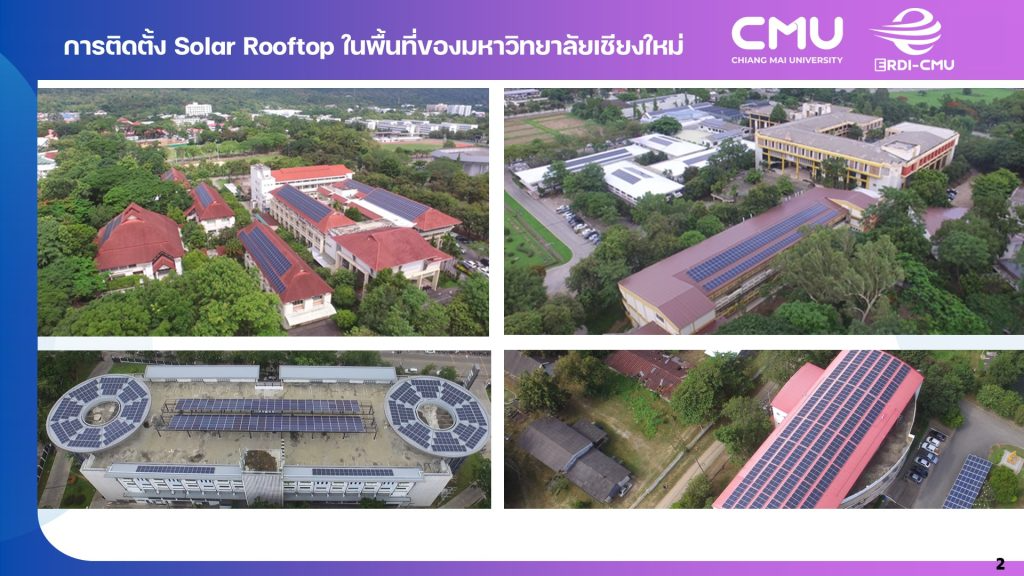Installation of solar power generation systems
Chiang Mai University is elevating its position as a clean energy model university by continuously installing solar PV systems across various areas within the university to maximize its own electricity generation capacity.
Installed Systems
Solar Rooftop: 168 academic and office buildings
Solar Floating: Solar panels floating on the surface of water
Solar Car Park: Solar-powered car parks
The installed systems have a total generating capacity of over 12.6 megawatts, and an additional 12.4 megawatts is currently being expanded, bringing the total generating capacity to 25 megawatts within this fiscal year.
Tangible Results
Reduced dependence on electricity from the Provincial Electricity Authority (PEA) by up to 30%
Reduced carbon dioxide emissions by more than 17,400 tons per year
Supporting the goal of becoming a low-carbon university and achieving Net Zero Emissions in the future
University Energy Consumption Trends
ERDI-CMU’s monitoring and analysis of university energy data reveals that overall electricity consumption continues to increase year-over-year due to expansion of campus area and the increasing number of students. and more electrically-consuming devices.
However, it is worth noting that the proportion of electricity generated by solar photovoltaic (PV) systems is steadily increasing. This can slow down the growth of electricity costs and help universities maintain long-term energy security.
The importance of generating electricity for own use
Reducing the risk of dependence on external power sources
Enhancing the stability of the overall power system
Supporting the growth of Smart Campuses and intelligent buildings
Supporting concrete environmental goals
This investment in solar energy is not just about reducing electricity costs, but also laying the foundation for a sustainable transition to a clean energy society.



